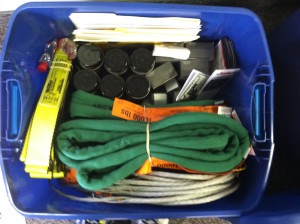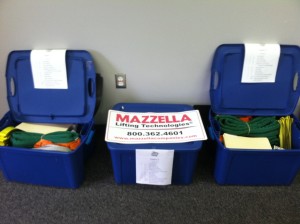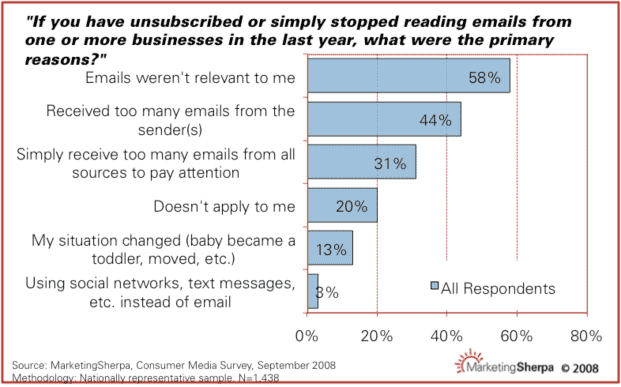How to Organize for Success in a Sales Blitz!
Blitzes can be a source of HUGE immediate sales and long term changing of your business normal but only if they are planned and handled right.
If your reps are spending their time driving around lost the company loses. Set them up for success and have a solid plan, and it all starts with the territory they will be calling on.
Sales….. Like Lightning
“How can we achieve a near-term sales increase combined with long-term sustainable revenue growth?”
This is a question that hangs in the air during virtually every conversation between owners, C-Level and Sales Management. One of the tried and true methods to achieve at least half of the equation is to conduct a sales blitz. The trick is how do you morph a temporary sales boost into the “new normal”?
A sales blitz is designed to fulfill the urgent need of increasing sales pipelines immediately. And most sales organizations know the basic “flavors” of blitzes with formats being designed for, at best, impermanent returns. I say both goals of an immediate sales bump and establishing the “new normal” are possible.
It’s a challenge melding lead generation, continual development training and motivational sales meetings, I grant you, but if you run a Blitz using this system be prepared for a revenue growing, “sales climate changing” event.
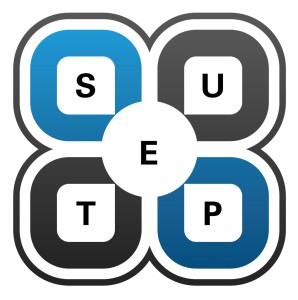 S.E.T.U.P. your team for success
S.E.T.U.P. your team for success
Strategy
This step should start minimally 60 days before the blitz. Map out EVERY detail from the initial touch, phone dial, live visit, all follow-up and ongoing relationship builders and more. At the planning meeting ask these questions:
-
What market/area are you attempt to penetrate?
-
What is the goal(s) of the blitz? Short term, Mid Term and Long Term?
-
How can you warm up the market/area you will be blitzing?
-
What will you use to warm them up? What frequency? What platform?
-
What products fit/are most desired by this market?
-
What vendors should you team with?
-
What should your teams have with them? Brochures? Giveaways?
-
What will be the competition’s reaction?
These questions are a great starting point but you have to go deeper yet. We all know long term sales success is about the grind. Doing the little things everyday that build best practice habits that ultimately pay off. It’s the same here only we need to “microwave” the process a bit.
Education
Day 60 should begin with teaching of an effective lead generation system and every system is made up of 3 things, tactics, strategy and learned skills.
Many of the tactics and strategies that need to be adopted are here https://matriximpact.com/site/?p=1125.
Your team also need SPECIFIC skills. Those skills need to be practiced in real-life simulations tightly tied to the reality they will experience. Here are 5 of the skills that will be required of anyone participating in the Blitz.
-
Client research and its application
-
Tele-Sales: Warming up the drop-in
-
Lobby Intro: Getting past the Gate Keeper or at least gaining needed info
-
Benefit Value Discussion: Setting the hook to continue the discussion
-
Facility Walk-through Technique: How do you maximize contact with the right person?
-
Wrapping up the visit: Very few drop-ins will result in a sale. The real goal is increase and expand in your sales pipeline
There should be a regular schedule of training leading up to the Blitz event. Refresher classes, reviews and Blitz day reminders for everybody involved. This is why there needs to be a Blitz QB. One who can coordinate information, learning and distribution for all the Blitz teams.
Tools
There are many tools needed for a successful Blitz. Call Template, all lead generation letters, impact touches, pairing maps, company intelligence, handouts, giveaways schedules and more, all customized for your business and for the goal of your Blitz.
The key is to be prepared and start the assembling of your tools sooner rather than later.
Users & Interface
Everything management does HAS TO BE hands-on. Management needs to be the great guiding hand in the structure of the Blitz but it also needs to be a participant during the Blitz days. I have had everyone from Middle Managers to Vice President’s of Sales to Owners come up to me after a Blitz and effusively say “John, thank you for making sure I was on a Blitz team”.
Think about it. They get out of the office routine of meetings and problems and get to spend minimum 2 days with sales people and customers. They find out what the ground troops do on an everyday basis and what has changed over the years. They hear first hand customer’s issues and concerns. It can reinvigorate the most curmudgeonly of management and this isn’t even the best reason.
When a prospect/customer is introduced to the Vice President or Owner the look on their face is priceless. I mean WOW, the VP or Owner took time out of her/his day to come and visit. Few gestures have a greater customer service impact than this.
Sales people MUST take ownership as well. They have to be involved in all strategy discussions. There a a multitude of tasks that need to be divvied up among the sales team. A sales person has to be the in-office Blitz QB. This is a critical position. Their job is to coordinate all activity. They have to stay in touch with the teams and provide updates. They are also troubleshooters as opportunities or problems come up. Depending on the size of the blitz you can have as many 2 or 3 QB’s to ensure you have proper support.
The bottom-line: from ownership to front-line sales, everybody plays a crucial role in the execution of a successful Blitz .
Performance
This is what it is all about! You need to GUARANTEE your team is prepared, practiced and energized. If you do you will be SETUP! to have a successful Blitz day(s) and to continue your success throughout the year.
After your strategy meeting(s) you need to conduct
-
Weekly update meetings: No longer than 30 minutes but it is CRITICAL to make sure everyone is completing their assigned duties, remember there is no small job when executing a Blitz.
-
Minimum of 3 education sessions: Would you rather your salespeople practice on their customers or with you?
-
Blitz Kickoff: Night before the Blitz you cover every detail and logistic necessary and take all questions. Team & territory assignments, Car stock, Vendor presentation and motivation. Make sure you have daily goals and prizes for performance as well.
-
Blitz Day: Everybody rallies at central location, unless territory demands call in. You go over any final pieces and send them off to kick BUTT.
-
Blitz Day Re-Cap: Everybody reconvenes at central location. You cover the results, hand out daily prizes, share successes, what worked and what didn’t then break for dinner.
-
Blitz Wrap Up: Similar to Re-Cap. You also need to triage all leads and assign to proper parties. Agree on timing of followup meetings to check progress of leads, generally think 2 weeks out, a month out and 90 days out. This will allow you to see “the toothpaste getting squeezed through the tube”.
Below are the Performance results from a tightly run, well executed Blitz.
You need to lay the ground work for continued nurture prospecting that leads to a steady stream of sales revenue for the foreseeable future. This process focuses on installing habits in your sales team and helping to either create or augment a lead generation system. When executed correctly, a Blitz will bring in immediate sales dollars and set the tone for ongoing success within your current selling environment.
A Blitz is not a band-aid type solution to improving sluggish sales. It’s an organic, holistic method to improving today’s sales revenue AND your overall sales atmosphere, establishing a “new normal” to your team’s everyday sales activities and results.
How To Improve Your Conversion Rate 50% When Calling Prospects Part 1 of 3
I do not believe in classically defined cold calls; Picking up the phone and calling a list of contacts that we know nothing about. We live in a digital age and those types of calls are analog. I do believe, as professional sales/business people, that we absolutely NEED to make as many calls to potential clients as possible. The question is how we do it.
There is soooo much we can do to warm up these calls and to make them more impactful than our predecessors could possibly imagine. The first part of this strategy starts with our willingness to put in the time to do research BEFORE picking up the phone. I am not talking about writing a thesis on each potential but there is work to be done BEFORE we pick up the phone.
The Library and Linked In
Almost every suburb now has state of the art library facilities that you don’t even have to go the building to use and it only costs you a trip to the library to get a library card to allow you access. They have online research tools like Reference USA, Regional Business News or Glassdoor, any one of these will give you more information than you can possibly imagine.
Then there is Linked In. This is the greatest free research tool ever invented. You can find out, in great detail, the professional specifics of virtually anybody or any company. The search tool is also top notch. What I like most is being able to search by school as well as other categories. I mean why not start with people you either went to school with or attended your school?
End of Part 1
The bottom line is with a minimal time investment you can learn gigabytes of information about potential clients before ever talking to them. All it takes is the want to on your part, the desire to differentiate yourself and services to the potential BEFORE they even know who you are.
Each piece of this process builds the needed momentum to get an increase of 50% in your conversion rate. My next post will teach you the most impactful way to get a potential client’s attention before you call.
In the meantime, you can either make sales or make excuses but you can’t do both!
Selling to the Government and Municipalities
I recently had a great conversation with an old friend about this topic, specifically about making a presentation to a group of decision makers and influencers. Below is the summary of my advice to him.
Rule 1: Don’t waste precious time talking about how great your company is, how many locations or how much yearly revenue it achieves. Customers want to know SPECIFICALLY how you can solve their problems and how you can save them money.
-
Governments/schools are two verticals highly resistant to change but they do

understand budgets and DOLLARS. -
Tie problems/issues together with their price tags EARLY and often in your presentation.
-
People can’t cognitively get their head around the big numbers quickly. DO NOT try a big, dramatic reveal just before presenting the investment (not price). If you try and pull a “ROI rabbit” out of your hat at the end of a presentation they will initially think it is a “sales trick.” Build the ROI case slowly from the beginning, so they are doing the math as they go.
-
Now, when presenting the investment (not price) customers already have the simple math down and are thinking “this solution amortizes itself over x years or months.”
Final Point: The first thing government, schools and the like think when seeing they can save money on a potential solution is what they can buy with the savings. Remember the nature of budgets in governments, municipalities and schools is if you don’t use it, you lose it.
-
What else is in their plans?
-
What projects could they fund with the savings from your project?
-
How would it make the decision maker(s) look like heroes?
 If you can answer these questions, if you can make the DMs heroes or make a dream project come true you are not a sales person but a savior and the sale closes itself!
If you can answer these questions, if you can make the DMs heroes or make a dream project come true you are not a sales person but a savior and the sale closes itself!
Remember the words of Seth Godin “People rarely buy what they need, they buy what they want.”
Are You Holding Yourself Accountable as a Leader?
I spend my days helping organizations grow their sales an average of 42%. The longer I am in this field the more I realize NOTHING is more important than having the right people in place, especially in leadership. One of my favorite quotes on the subject comes from Alexander the Great: “I am not afraid of an army of lions led by a sheep; I am afraid of an army of sheep led by a lion.”
We can set processes in place and develop naive sales people into savvy business people but if the people at the top don’t get it we may as well go to the window and throw our money out of it.
This is a BIG area of concern for every sales leader out there in the coming year. I promise to do everything I can to help you keep your eyes on the prize and doing the things needed to be a success but in the end it comes down to you. Or as I like to say “you can either make sales or you can make excuses but you can’t do both.”
Couple questions to ask yourself:
- “What are you accountable for as a leader and are YOU meeting those expectations?”
- “How do you hold yourself accountable?” Do you have an“accountability partner” or do you just “wing it”?
- “Do you have clearly defined and communicated expectations?”
- “How do you keep FOCUSED?”
Below is the text from a one page reminder Click Here for the PDF version of this http://www.slideshare.net/JohnKolencik/are-holding-yourself-accountable-as-a-leader
“As leaders, we enjoy the responsibility of helping our people develop in a way that encourages them to hold themselves accountable for their attitudes, their work, and their results.
We need to be as disciplined, resourceful, and resilient in our efforts as we ask our people to be in theirs.
Relentless leadership is embracing the fact that the need for reinforcement never ends and uncomfortable conversations are a necessity. This is how something special is created.”
Click Here for the PDF version of this http://www.slideshare.net/JohnKolencik/are-holding-yourself-accountable-as-a-leader
What Happens AFTER They Become Customers?
This is the $1,000,000 question isn’t it? We spent the last 6 articles talking about everything you can do to generate leads using the S.I.T. Lead Generation System. What we haven’t talked about yet is the next step.
To recap, S.I.T. Lead Generation is a customer engagement system. The ultimate purpose is to deliver an ongoing stream of qualified leads to your sales team. What makes it uniquely effective is its ability to also deepen the relationship between suspect/prospect/customer and company/salesperson. It has both cumulative and immediate impact in varying degrees based on strategy and tactics. But the key, at its heart, is building real interpersonal relationships.
No matter what sales methodology you subscribe to, you can never escape the fact that sales is rooted in relationships with real people. Essentially S.I.T. is about becoming uncommonly RELEVANT with our contacts to the point where we transcend “basic selling.”
So for the purpose of today, let’s JUMP over the sales process (we will hit it HARD in subsequent articles I PROMISE) and talk about utilizing S.I.T. with the people that we invested all that time in building relationships, our customers.
The Crime
It is a fact, as plain and real as it is ugly, most sales organizations do a TERRIBLE job staying in touch with customers after the sale. I say ‘sales organizations’ because the mind set starts at the top. More often than not, management is more worried with next month’s sales numbers to the exclusion of the relationships you had to build to get last month’s sales numbers.
The truly criminal thing is we have put in a boatload of time and effort to make this system work, but have simply lost the will to maintain it. Why should we essentially CHOOSE to WASTE the fruit of our labor ? If the system is executed properly we can continue to deepen the relationships and mine our current customers for cross selling, up-selling, referrals, networking, industry experience and many other opportunities benefiting both parties.
The Motive
It is always about time isn’t it? “I don’t have enough time to reach out to them” or “I know I need to call my old customers but I have a proposal to put together.” These aren’t evil motives, they are just WRONG. You have to program into your daily/weekly schedule current customer touches. Think of it like breathing, you don’t do it you DIE!
It is important to note, these touches can’t ONLY happen when the customer is having problems or that is how they will associate you, with a PROBLEM. Just like in when we began using S.I.T. these touches need to be proactive not reactive.
The Means
This is the beauty part. The essential structure is in place. We are already executing a successful S.I.T. system. We know how to schedule touches, what delivery systems to use, how to build relevant content, and more (all of which can be seen in previous FSF posts here, here, here and here). We just need to re-task and tweak for customers instead of suspects/prospects.
The Opportunity
You have a chance to develop a long-term relationship with your customers that can be rewarding in a number of ways. Developing CURRENT relationships as opposed to building NEW relationships is pretty similar. The difference lies in 2 specific areas:
- The Depth: Because of your existing relationship you can go deeper into the what makes the customer tick, finding out even more pertinent facts. They will be much more open and you can really flesh out their profile.
- Risk vs. Reward: The people in your existing relationships come to depend on you. They made a business decision to go with you over a competitor, implicitly trusting you. This is why it is imperative to not only keep up with the current level of customer service, but to improve upon it. You don’t want to put the kibosh on all your hard work because of LAZINESS or worse APATHY. Demonstrate how you value your customers by continuing to deepen and strengthen the relationship with them, I promise it will pay back HUGE DIVIDENDS!
The “Beginning”
Just like life, a customer relationship is a journey, not a destination. There will be ups and downs, twists and turns but when handled correctly it will be the most prosperous journey of all!
All righty folks, that puts the finishing touches on the S.I.T. Lead Generation System. I strongly urge you to re-read and/or bookmark the other posts that define the system in more detail. Also, don’t forget to go to my website for more information and you can always email me if you have any specific questions. Next article we will set off in a new direction, but with the same goals, helping to increase your sales revenue and profit while improving your productivity.
Until then remember, you can either make sales or you can make excuses but you can’t do both…. I am outta of here!
“I Don’t Know Where We’re Going, But We’re Making Great Time!”
One of my favorite euphemisms for ‘man’ not wanting to ask for directions. Unfortunately, it is also true in the sales world. We all want a productive lead generation program, but most of us aren’t willing to invest the time and resources into it.
Lead generation, just like driving to the Grand Canyon, needs to be thoroughly mapped out BEFORE you start the journey. You have to know NOT JUST where you are going, but what is along the way, what does progress look like / can you measure it and you have to be able to answer one of the great questions of our time “WHAT IF?’
Continuing our discussion of S.I.T. Lead Generation, I will be discussing what kind of “map” you need to follow for lead generation, what do the “sign posts” along the way look like and give some samples to use in your sales efforts.
Remember, lead generation is not ONLY for new contacts, but for existing customers as well. We will be exploring how to Stay In Touch with ALL contacts in a way that will demonstrate your dedication to customer service and differentiation from your competition.
The Road Ahead
There is a psychological concept called Self Efficacy. Even when something seems impossible, it is the strength of our belief that makes success possible. The absence of this belief guarantees failure. A strong belief in the mission fuels our ability to focus, put forth effort, and persist. Believing allows us to see the goal (continue in the face of daunting adversity) and break the goal down into more manageable objectives (one evolution at a time). If the evolution is a cold call, it can be broken down into even smaller objectives such as asking good questions. Believing allows us to seek out strategies to accomplish the objectives. Then, when the call is done, move on to the next evolution. Thinking too much about what happened and what is about to happen will wear you down. Live in the moment and take it one step at a time.
Self Efficacy is EXACTLY why we have to keep in mind all reasons this process is SO IMPORTANT.
We want
- to DECREASE time in the sales cycle and INCREASE closing percentage.
- to remove the “Ugh Factor” from our phone calls and “warm up” our cold calling.
- to INCREASE our average sales size.
- to receive that “magic call” from contacts saying they received our information and THEY want to talk to us (yes this will happen with this system).
- to have a REAL reason to call our contact and NOT be stuck saying “I just wanted to…”
- to be a THOUGHT LEADER! Somebody our client turns to when they have questions because we know they won’t be in the buying cycle all the time. Sometimes they just need some info and we want to be the providers of that information.
5 Steps for S.I.T. Scheduling
1) Classifying your suspects, prospects and customers is critical. Not all contacts are equal and you can’t treat them as equal. You want to personalize your touches as much as possible and the variables you must take into account for that are:
- newly found or currently existing in database
- industry/industries that you sell into
- positions titles and responsibilities by position
- buying cycle
- size of business (revenue or employee)
- Active and Dormant Needs (see description in post at link)
All of these factors are crucial because they will all have their own built in time frames and predilections and they ALL must be taken into account.
2) After you have classified all contacts you must perform what I call ‘Opportunity Research’ using LTLR (see description in post at link). You have to know everything you can about all these factors and how they effect your contacts. Using ‘Opportunity Research’, many times you will further stratify your contacts leading to even MORE personalization and the possibility of deepening the relationship, ALL GOOD THINGS!
‘Opportunity Research’ will also be different depending on the above variables. You will invest more time in research for some opportunities opposed to others, it only makes sense to prioritize your time, you only have so much of it. A word of caution though for the previous statement, don’t get lazy just because an account “looks smallish.” Run out “ALL your ground balls” and do your research you never know what may be lurking behind door number 2!
3) We have classified and researched our contacts now we can put them into a schedule of touches (click here to see descriptions of touches). Newly found and existing will always be handled differently (at least until the newly found are brought into the cycle). Click this link to see an example S.I.T. Schedule. Customers also need to be touched differently. They should see the ULTIMATE in customization. You should know these folks inside and out, thus they have the most individually personalized touch system possible. Even if your product/service is a one time purchase and you have NO chance of ever selling to that customer again KEEP THEM IN THE TOUCH PROCESS. It is customer service 101 and you never know when they will have a reference for you.
4) Monitor, Measure and Modify: Always know what is going out, to who and when. You don’t want to be caught flat footed if a customer calls to thank you and you don’t have the foggiest why he is doing it. Always know the ROI for your efforts. This knowledge will help you to spend money on the RIGHT areas, not just any area. Always improve your efforts whether it is the timing, the content or delivery. If you are getting a high rate of call ins ask why? If you are not getting a high enough click through rate ask why? ALWAYS LOOK TO IMPROVE YOUR RESULTS!
5) Don’t STOP EVER! Once you start this process you can never stop it. Aristotle once said “Nature abhors a vacuum.” If you are providing consistent, relevant content, your contacts will begin to look forward to it. If you stop for any length of time, I PROMISE YOU, your contacts will find someone else to provide them content and that person’s name is COMPETITOR!
That was a lot of info for today. Let’s take some time to process it and give me a call or shoot me an email if you have any questions. Next time in the Forum we wrap up S.I.T. Lead Generation and lay the ground work for your next step on the road to sales success!
Until then remember, you can either make sales or you can make excuses but you can’t do both!
I Just Wanted To….
I hate those four words! And you know what, so do your customers. Those words (and other variants) form the basis of the worst that lead generation and staying in touch with contacts has to offer. Whether it is on the phone or in person here are a few of the worst cringe inducing lead in’s
- I just wanted to say hi
- I just wanted to follow up because you said you would have an answer
- I just wanted to call because it is the (beginning/end of month, been a few weeks)
- I just wanted to check and see if you were in the market yet
- I just wanted to stop in and say hi, haven’t heard from you in a while
All of these examples rate WAY high on ”The UGH Factor” scale. You know ‘UGH’, the sound you hear from a customer when you “pop in” for a quick hello or “catch them” on the phone to check status. We HAVE to stay in touch with our suspects, prospects and customers, our business lives depend on it, but the question is how do we do that in a high value added way?
In The Beginning
Think back to virtually any good relationship you have, the last thing you wanted is that person DREAD you coming over or calling. Our challenge is to make our business relationships WANT to take our call or look forward to us stopping in unannounced. That is where the S.I.T. Nurture Prospecting System comes in.
First, we need to embrace the BIG 3: Relevance, Consistency, Timing and incorporate them into our entire touch strategy. Next we need to make sure we Personalize and Monetize everything that they see from us (please see previous post “Do You REALLY Know Your Customers?” for detailed explanation of both concepts).Once we have addressed these critical aspects, then we can start thinking about the touch process itself.
The Song of S.I.T.
Song is such a great metaphor for your S.I.T. System. Let’s look at the pieces that make up a song:
- Introductions help establish the key, tempo and mood of a song. You’ll know you’ve found a strong introduction when everyone recognizes the song after the first few seconds.
- Verses contains the story line and help answer the journalistic questions about who, what, when, where and why. They tend to be more or less the same from one verse to the next and yet they help move the listener along in an unfolding story.
- Bridges are connecting pieces or transitions from one part of a song to another.
- Refrains/Choruses usually deliver the essential messages, the payoff or the knock-out punch.
- Hooks are simply put the most memorable, distinguishable bit of the song.
- Breaks are a little relief from the song so far.
- Codas (or tags) are the special endings for songs.
Your S.I.T. elements are not that different
- Social Media Touches: No matter what you think of it, social media is a reality and is only getting bigger and more influential. Make sure that YOU and YOUR company have a positive image and are frequent contributors to the major sites of Linked-In, Facebook, You Tube and Twitter.
- Initial Contact Touches: Could be a letter, could be a phone call but you need to start the process strong, get in the door and get recognized. The great thing is, when done right, lightning can strike. Somebody could be in the market RIGHT now and because you called you can start them in the sales cycle immediately. Even better is when you get calls IN from your letter. I have customers that average a 20% call in rate from their initial mail touches. 1 Caveat: Never initialize contact with an email it has to be more personal to make a statement.
- Knowledge Touches: These could take the shape of articles, webinars/seminars in their industry, white papers or even ideas of websites your contact would find useful, but are NOT about you or your product. When chosen well, they paint the picture of of how you can help them through your selection of topical information. You can either mail or email these.
- Impact Touches: These are ‘creative’ ways to stay top of mind, such as a packet of seeds with a note that says “we help your business grow” or a simulated X-ray of an arm/leg on transparency stock and a note that says “is your manufacturing process broken?” I will even buy a good business book, Good to Great for example, and
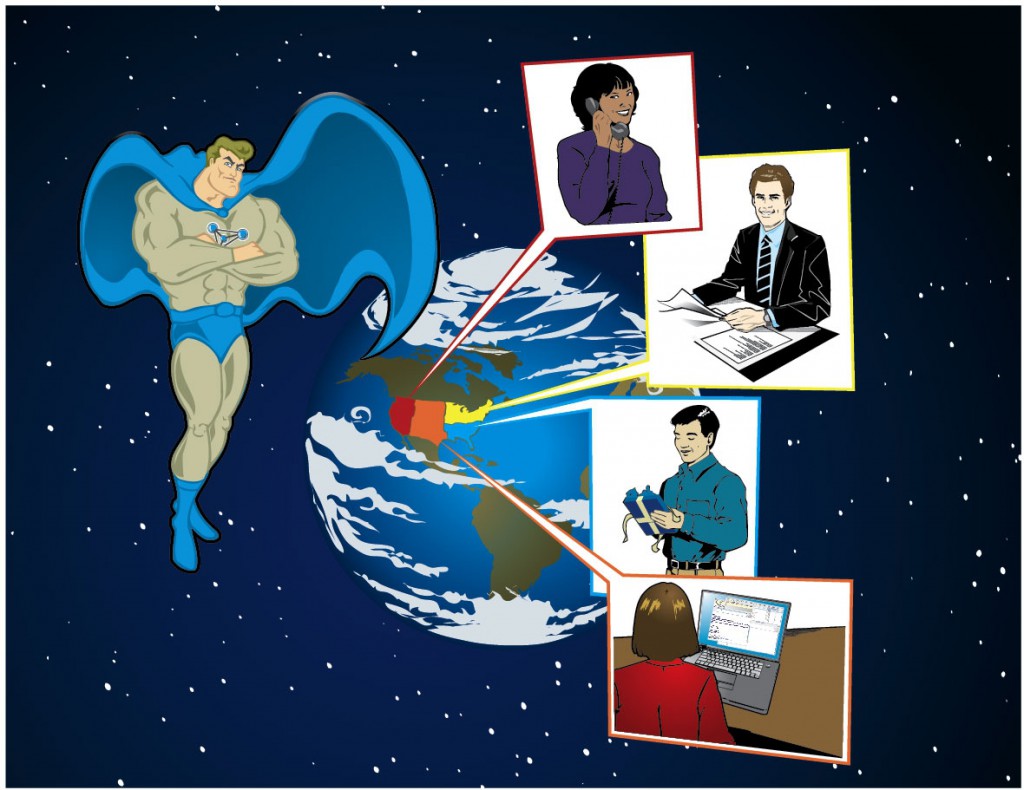 drop it off with a note that says “lots of great info for you.” These touches break you away from the norm and are fun to do as well. Primarily, these are delivered in person UNLESS there is value in mailing.
drop it off with a note that says “lots of great info for you.” These touches break you away from the norm and are fun to do as well. Primarily, these are delivered in person UNLESS there is value in mailing. - Bridge Touches: Sometimes you want to mix it up with a simple letter or email consisting of 1 idea that will prove useful. You can’t swing for the fences all the time, keep it fresh (and yes I know this one is actually named after an element of song.)
- Drop Off Touches: A combination of all of the above, the only difference is in the delivery. If you have an appointment in a business park make sure you bring along enough Drop Offs for the rest of the park. Make sure you L.T.L.R. (please click on read description in previous post) and get the info to the right people.
- Holiday Touches: Always remember you have ‘built in’ reasons to touch contacts, they’re called holidays. Don’t forget cards and letters on the big holidays like Christmas, St. Patrick’s Day and 4th of July, but also mix in the some of the less celebrated as well for example Arbor Day, Bosses Day and the 1st Day of Spring.
- Event Touches: Industry/topic specific webinars and seminars, that you or your company put on, should be part of the mix as well. Just remember these need to be INFORMATIONAL and not BLATANT COMMERCIALS. You should also look into events in your market space and submitting speaking topics for you to present.
- Status Touches: You didn’t think this was magic and you never had to pick up the phone again did you? The only difference is now, because of your efforts, you have a REASON TO CALL other that to say “I just wanted to check in.”
Now, by utilizing these touches, you have plenty of content to discuss during a Status Touch. There doesn’t have to be the ham-handed “I just wanted to.” Ask how they like the different pieces, what did they like most etc. Trust me, they know why you are calling, but you took GREAT strides to contrast yourself from the regular cold caller/drive-by caller. And it is the effort that will make all the difference in the world.
The implementation of these S.I.T. elements will help you to control the narrative of your company, influence buying behavior, guide your contacts to information that will impact their business, keep you top of mind in a very positive way and most importantly create the framework of a relationship that will based on mutual respect and not “I just wanted to……”
There you have it, an introduction to the universe of touch pieces for your S.I.T Lead Generation System. Our next post will lay out a sample schedule with some specific examples and we will talk about how to integrate into any existing lead generation efforts.
Until next time remember, you can either make sales or you can make excuses but you can’t do both!
Do You REALLY Know Your Customers?
I am reading the book Switch: How to Change When Change is Hard. The authors, Dan & Chip Heath pose a great question/analogy. There is 1 particular choice that people across our country make everyday that COMPLETELY alters everything in their life. They volunteer to change EVERYTHING about their present mode of living including, but not limited to:
- fracturing their sleep into 3-4 hour chunks of time
- how they spend their free time
- what they do with any spare money
- eating habits and much, much more
That 1 choice is parenthood. Why would people volunteer for such massive change? Anybody who has children already knows the answer to the question.
Now think about this in terms of your customers:
- Why would they make a change in their current situation?
- What would compel them to make a decision to move out of their comfort zone.
- What could possibly make them spend hours researching multiple options then spend the next few weeks to months of their lives meeting with, at minimum, 3 salespeople and telling their story over and over?
- All this just to take a chance and make a decision that could ruin their career with their company.
That is OUR magic question. THE question we must answer to A) educate our suspects/prospects/customers and B) sell them our products and services. The answer is, of course, to know and understand our potential customers by establishing REAL relationships.
So how do we begin a REAL relationship with people that we don’t know, but need to know to be a success? Lead generation of course, but how does a real relationship with potential customers start? It should be no surprise that it begins and ends in hard work, this is sales after all, but let me be much more specific.
L.T.L.R.
Learn To Love Research! (you all know I love my acronyms). I don’t care if it is online, at the library or experientially, you must research your potential market. You need to know what affects them on a daily basis, what situations (regulatory, legal, market based etc.) could change their business for the positive AND negative. You need to know the titles of your contacts and what those titles actually do. You need to know what their location geography means to their business. In short, you need to be an expert on your potential customers all BEFORE you send out 1 ‘touch’ from 1 lead generation campaign and this is just the beginning of the process.
Before They Are Customers
Before they are customers they are either suspects or prospects. I teach my clients to characterize status based on ACTIVE and DORMANT needs. Simply put, if a potential customer does not recognize they have a need, then DORMANT would be the classification and they’re what I call suspects. If recognition is present, they will have an ACTIVE need and they could be prospects. 1 caveat, this is the simplest description of suspects and prospects. There is more complexity to these definitions but for the sake of today’s discussion it is more than sufficient.
The BIG 3
Once your research is completed you need to develop your Touch Matrix. This consists of all the different type of touches you will be using to nurture the relationships with your clients. Some of the components to consider are letters, emails, social media, whitepapers, articles, 3rd party case studies, webinars and more.
The design, type and, most importantly, content of touches, that will be used, are dependent on the recently completed research AND the BIG 3:
- Relevancy
- Consistency
- Timing
All your content MUST be RELEVANT to your suspect/prospect/customer, their organization or best of all BOTH. It could be industry specific, job specific or personal specific, but it can’t be about YOU or your company. Remember relevance is like beauty, it is always in the eye of the beholder. So forget ‘special’ price lists, coupons or product announcements.
Once you start your S.I.T. Lead Generation System you can’t stop. You need to be CONSISTENT with your touches. If you are doing a good job getting your folks impactful content they will become addicted to it. If, for whatever reason, you stop ‘touching’ your folks they will reach out to find OTHER (see competition) sources for the same information. All your work thus far will be shot to pieces with the interesting side effect of degrading your reputation for reliability/customer service for good measure.
“TIMING is everything.” I am sure you have heard that before. It is every bit as true with your S.I.T. System. You need to know when your folks like to receive information and what events coincide with a touch from you. This is the art of appearing to be ‘coincidental’ on purpose. Mix up the releases of your info based on your research/experience and always keep your ears -eyes open for trigger events and potential tweaks to the system. The goal is being the person who is always on the tip of their tongue when they are talking to their associates or their superiors.
Personalize and Monetize
2 crucial mistakes that many people make when constructing their first S.I.T. System, is forgetting to PERSONALIZE and MONETIZE. Each piece has to be constructed from design to content to delivery system the way that will make the biggest IMPACT with individual PERSON who is our suspect/prospect/customer. It doesn’t matter what you like, it matters what they like. Don’t substitute something that you think “looks cool” if it contradicts all the research, experience and time you have invested.
“This is show business not show friends” said the character ‘Bob Sugar’ in Jerry Maguire. We must remember that everytime we touch our suspect/prospect/customers with needs to ring the ‘money bell.’ The people we contact don’t want fluff for fluff’s sake. They want something that will help them do their job better, something that will get them noticed by the boss or even improve a system at their facility. Always err on the side of getting people information that can be MONETIZED for real value at their job.
All righty then, that’s all for today. Next time we will continue to lay out the S.I.T Lead Generation System giving you more ideas to grow your business….
In the meantime, remember you can either make sales or make excuses but you can’t do both!
I am outta of here…..
The Birth of a SALE
8:06pm St. Patrick’s Day, my wife gave birth to our second child, Emily Elizabeth Kolencik. Thank you we think she is beautiful too.
This wondrous event got me thinking about when a sale really begins. Does it start when we research their company? Does it start when we call the suspect for the first time? Does it start when we do a presentation for the prospect? Or does it start with the first objection?
Cut it any way you want but the sale starts when the PROSPECT decides they have a problem. Not until that moment of “conception” do we have even the POTENTIAL for a sale. The trick is how do we get to be a part of the moment? Just because the prospect has decided they have a problem doesn’t mean they will automatically come looking for us. So how do we insert ourselves into the decision making process so the solution to their problem “looks” like our solution?
S.I.T. Lead Generation System
Back in my previous post Cold Call Once, Then Never Again... I started to lay out the basic concept for the S.I.T. System. Today we need to explain the philosophy behind the system. If you don’t know the why or buy into the why it doesn’t matter what the system is made of.
S.I.T. Lead Generation is a customer engagement system. It’s ultimate purpose is to deliver an ongoing stream of qualified leads to your sales team. What makes it uniquely effective is its ability to also deepen the relationship between suspect/prospect/customer and the company/salesperson. It has both cumulative and immediate impact in varying degrees based on strategy and tactics. But the key, at its heart, is building real interpersonal relationships. No matter what sales methodology you subscribe to, you can never escape the fact that sales is rooted in relationships with real people.
95%-5% Rule
Based on writings, research and books from as far back as Adam Smith, the father of modern economics, we have the 95% – 5% Rule. At any given time, only 5% of your potential market universe is actually looking for what you may be selling. This means they have made a conscious decision to look for a solution and guess what, it may NOT be your solution. When a prospect is actively pinging for a solution they are generally hit by an average of 7 potential vendors. All things being equal, 14.2% is the average chance you have of landing that prospect, the math is not good. But what of the 95%? The average number of potential vendors that stay in touch with them before they decide they need a solution is…. 1, just 1, I know it is unbelievable.
Research by Inc. Magazine stated in a survey 96%, of over 1000 sales people from a large range of industries, said that customer service is what differentiates them from their closest competitors. It further stated that 91%, of owners, decision makers and purchasing agents said the customer service they experience is BEST WHEN IN THE SELLING CYCLE… WOW! All of sudden those horror stories about salespeople abandoning their customers after a sale became true. The reality of this is if we do not find a way to reach out to the 95% we are forever doomed to be 1 out of 7 competitors and have a 14.2% chance on every potential sale. And if those are the facts, on the ground, what are we to do about it?
Staying In Touch
I know what you are going to say here “I do stay in touch and I always ask what new projects they are working on.” There is also the pop-in sales call replete with the old line “I was just in the neighborhood and thought I would check in.” These examples, my friends, are not a sales calls but BOOTY CALLS. Here’s some other examples: “our customers get regular emails and letters telling them about all our new products and specials” that true believers is advertising by BILL-BOARD. And perhaps my favorite is “we get them baseball tickets every year” do I have to tell you what that categorizes you as? You see in all these efforts it is the approach, method and mindset that is the problem.
We have to look at this through the prospect/customer prism, but we can take cues from OUR own behavior Do you like a salesperson calling when you are not in the market for something? What do you do with emails and letters that are blatant advertising? And that is how you need to look at S.I.T. We need to know what is relevant and important to our suspect/prospect/customer, information with personal value and monetary value. THAT is what they want to see.
- What is important in their industry?
- What can effect their own personal growth?
- What can help them do their job better?
- What is important to them in their personal life?
The answer to these questions, by the way, is NEVER “product information from our company. The bottom line is this, if we fail to take an interest in our customer’s business and personal life what reason do they have to take an interest in ours?
There is an old saying “Treat strangers like friends, friends like family and family like you can’t do without them, why, because you can’t!” This variation, that I coined, is the mind set that needs to rule your sales universe. “Treat suspects like prospects, prospects like customers and customers like you can’t do without them, why, because you can’t!”
All righty then, that’s all for today. Next time we will talk about the Big 3 of S.I.T. and 2 factors that you ignore at your own peril!
And remember you can either make sales or you can make excuses but you can’t do both!
I’m outta of here….
Archives
- May 2018
- November 2016
- June 2016
- April 2016
- March 2016
- February 2016
- January 2016
- February 2012
- January 2012
- December 2011
- October 2011
- August 2011
- July 2011
- June 2011
- May 2011
- April 2011
- March 2011
- February 2011
- July 2009
- June 2009
- May 2009
- August 2008
- June 2008
- May 2008
- April 2008
Categories
- A-Players
- Best Practice
- Change
- Cold Call
- Communication Skills
- Continual Development
- Critique Session
- Customer
- D.I.G.
- Drive
- Firing
- Guts
- Handling criticism
- Hiring and Assessment
- Hiring Dashboard
- Human Resources
- Intelligence
- interview questions
- Interviewing
- interviewing sales superstars
- Lead Generation
- Leads
- Motivation
- Naturally Curious
- New Contact Touches
- Position Contracts
- Proposals That Sell
- Prospects
- Reference Checks
- S.I.T. Blitz
- S.I.T. Nurture Prospecting System
- S.I.T. Touch
- Sales 3.0
- Sales Blitz
- Sales Management
- Sales Superstars
- Simulations
- Skill Sets
- Staffing
- Suspect/Prospect/ Customer Dynamic
- Suspects
- Talent and Traits
- Termination
- Uncategorized

